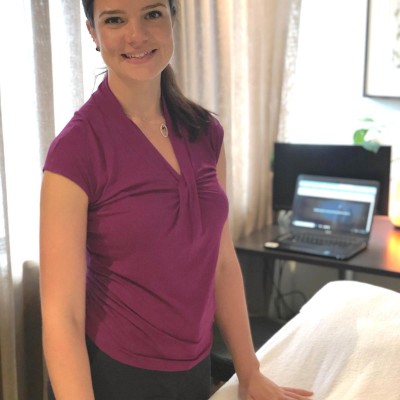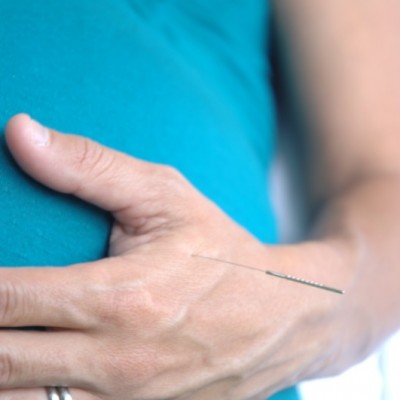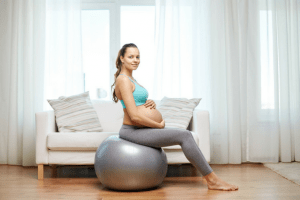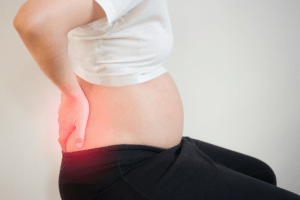
What do you love about your work as a remedial and pregnancy massage therapist?
I love being able to give women relief from any aches, pains or discomfort they have. I also absolutely adore when women lie down on the table and 9 times out of 10 there is an instant “Ähhhhhhhh” moment as they allow themselves to relax, knowing that the next 60-90 minutes is all about them and nurturing their bodies. Being a remedial and pregnancy massage therapist it’s my job be as caring, kind, compassionate and knowledgeable about the body as I can possibly be. Considering these are my favourite things to be in life, I truly think I have one of the best jobs in the world!
As well as being an aromatherapist and reiki practitioner, you teach feminine embodiment yoga. Would you like to tell us a bit about that?
Love to, it’s a massive passion of mine. Feminine Embodiment Yoga (FEY) is a specialised yoga practice uniquely celebrating the female form and flow. The practice allows you to strengthen your body through a combination of hatha yoga poses and rhythmic movements. It also has a strong focus on breath, balancing active and restorative poses and meditation. I love being a woman and learning about how unique our minds, emotions and bodies are, so when I discovered a yoga style specifically developed for women I couldn’t get enough and I enjoy sharing this practice with all women.
As a Practitioner, layering treatments with several modalities brings incredible results. For example, in a birth preparation massage the physical massage will work on an anatomical level, with the essential oils in the massage oil penetrating to a physiological level, add some reiki to reach the energetic level and once the massage is complete we the discuss home care and simple yoga postures and stretches that can work wonders to continue the birth preparation process.
Do you think women could benefit from feminine embodiment yoga during their fertility journey? How?
Definitely, Feminine Embodiment Yoga (FEY) focuses on relaxing the nervous system by releasing physical and emotional tension from the body. When the nervous system is relaxed your body goes from being in the ‘fight or flight’ mode (sympathetic nervous system) to “rest and digest”mode (parasympathetic nervous system) allowing your body to heal and restore itself. The practice also targets specific areas of women’s bodies for greater engagement and toning. For example, in today’s society we do a lot of sitting at desks, in front of the TV, in the car, on transport etc. So FEY focuses on building strength in your legs, bottom and core, as well as stretching out the hips and pelvis, as these areas can become tight and locked. This is especially beneficial for fertility as it creates space and increases blood flow and nutrients to the area.
You support many women with massage on their journey through pregnancy and also post birth. What are some of the biggest challenges you see women going through physically and emotionally during these times?
It is an amazing privilege to be able to support women through this time of great transition as their bodies adapt and change to accommodate the next generation they are growing inside them. Exhaustion and fatigue are common challenges I see women facing during pregnancy and post birth. We live in a fast pace society and being the matriarch of the family comes with a never ending to do list, which you have just added “grow human” and/or “raise child” to the list! It’s important to get enough rest so your body and the baby has the best chance to grow and thrive. Getting a massage is amazing for this and I’m delighted when women come in to see me, having placed importance on putting themselves and their babies on top of their priority list. A massage helps relieve tension, headaches, body aches and pains, and cramping, to name a few. Massage for birth preparation is crucial to be in the most relaxed, rested and healthy state for the labour.
Post birth massage is essential to relieve the stress your body has gone through in labour and accelerate the healing process by releasing tense muscles which aids in moving lymph, fresh blood and nutrients around the body. It can be a challenge to find the time with a newborn to make it into the clinic so we recommend timing it just after a feed and then your gorgeous baby can sleep peacefully in their pram in the room while you receive a much needed massage. If they wake and cry it wouldn’t be the first time the awesome team on reception coo them back to sleep (it’s literally a pleasure and cuteness overload). If leaving the house still seems too hard (which it totally can be trying to time feed and sleep cycles) we offer home visit massages, we recommend you have someone at home with you to watch over baby so you can fully relax in the massage and receive as much nurturing as you give your bundle of joy.
How else can men and women benefit from massage?
Massage can benefit men and women in so many ways by increasing circulation, assisting detoxification, relieving tension and pain, reducing stress and anxiety, improving sleep, and boosting your immune system, just to name a few.
Massage also counteracts all the sitting we do which is an awesome benefit considering how many of us have office jobs equating to prolonged periods of sitting. All this sitting leads postural stress which most times manifests in the shoulders and neck. More advanced postural stress can show up as pain or weakness in the lower back and gluteals. More often than not after a massage I will have patients comment how they didn’t realise how tense they were or how tight a specific area was until it was massaged. It’s highly beneficial to have a regular massage, even just once a month, to check in with your body before any aches or pains become acute or chronic.
What part of your work has ever brought you to tears?
As much as I try, I can’t help the rush of emotion when I hear about the birth, see pictures of, or meet a baby of a mother I have been massaging during her pregnancy. Its humbling and special to be able to share the joys of watching their belly grow and feeling the baby move when they receive a massage in Mum’s tum. Knowing that I have been able to support the mother through massage, which may have helped them have a more relaxed and enjoyable pregnancy is just wonderful.
Learn more about Nicole McCowan, remedial massage therapist at Fertile Ground Health Group or make an appointment to have one of her fabulous massage treatments. Online Booking








